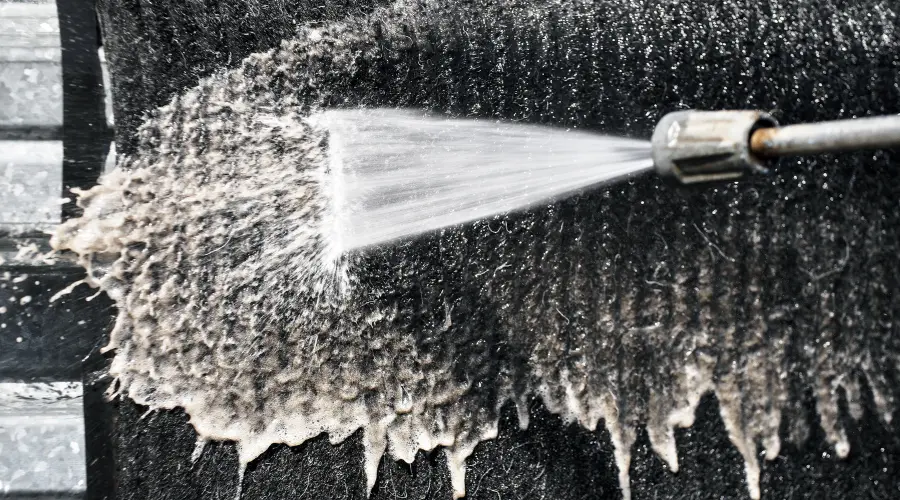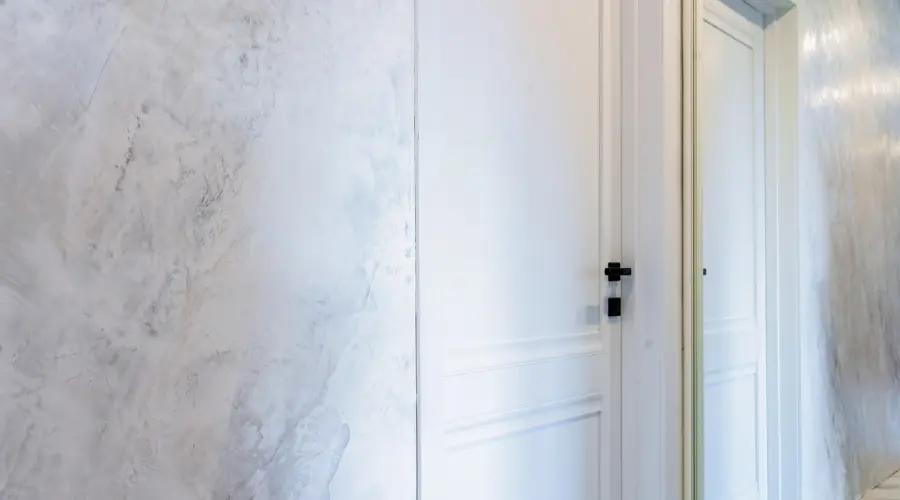Key Takeaways
- A well-thought-out color scheme enhances a restaurant’s ambiance and appeals to customers.
- Colors evoke emotions and influence customer behavior, enhancing their dining experience.
- Picking the right paint finish, preparing surfaces, and hiring professionals are essential for a successful painting project.
- Regular maintenance and updates can keep the restaurant looking fresh and inviting.
Creating a lasting impression is crucial in the restaurant business, where intense rivalry and patron satisfaction drive success. One of the most impactful ways to make a strong statement is through the use of color and paint. The right paint job can transform a space, create an atmosphere, and affect customers’ behavior. This article will explore eight essential tips for painting restaurants to ensure that every stroke leaves a lasting impression.
The Importance of a Lasting Impression
First impressions matter, especially in the restaurant business. When customers walk through your doors, the atmosphere should immediately convey warmth, hospitality, and a sense of style. The paint on your walls plays a significant role in shaping that atmosphere.
Colors can create feelings, set a mood, and even change how people eat. For example, warm colors like red and orange can make people hungrier, while more excellent colors like blue and green can help people feel calm and relaxed while eating. A nice-looking and clean interior can also lead to good reviews, more customers, and people coming back. So, spending time and effort on your restaurant’s paint job is not just about looks; it’s about creating an experience that makes guests want to return.
Revitalize Your Home with Expert Painting!
Get started with CCT Apex House Painting! Schedule your free estimate and watch your home transform with professional care and precision.
8 Tips for Painting Restaurants
1. Choose the Right Color Palette
The first step to creating a great atmosphere is choosing colors that match your restaurant’s brand and the feelings you want to share. The colors you pick should reflect the food you serve and connect with your customers. For example, a family diner might use bright and cheerful colors like warm yellows or reds to create a friendly and happy vibe. In contrast, an upscale French restaurant might choose elegant colors like deep burgundy, navy blue, or soft greens for a classy and sophisticated feel.
To effectively choose your palette:
- Conduct Research: Analyze competitor restaurants in your area to determine typical color schemes and identify what makes them appealing or distinctive.
- Create a Mood Board: Compile images, colors, and textures that inspire you. This visual representation can guide your decision-making process.
- Test Multiple Combinations: Paint small sections of the wall with different color combinations to see how they interact with each other and how they fit into the overall ambiance.
2. Understand the Psychology of Color
Different colors evoke distinct feelings and behaviors, which are essential in determining the eating experience. Understanding color psychology is vital for creating the desired atmosphere in your restaurant. Here are a few color associations to consider:
- Red: This color increases appetite and energy, making it a popular choice in fast-food and casual dining settings. It stimulates excitement and encourages quick decisions, leading to faster table turnover.
- Blue: A calming and excellent color, blue is often effective in fine dining establishments where a more relaxed dining experience is desired. It’s important to note that blue can suppress appetite, so it should be used thoughtfully, perhaps as an accent color.
- Yellow: Associated with happiness and warmth, yellow can create a welcoming environment, making it great for family-friendly settings or casual eateries. However, be cautious with its intensity, as overly bright shades can be overwhelming.
- Green: This color represents freshness and health, making it ideal for restaurants that focus on organic or health-conscious cuisine. It can promote balance and tranquility, enhancing the overall dining experience.
3. Consider the Lighting
Before committing to a color scheme, assessing the space’s interaction with artificial and natural light is crucial. Paint colors might seem drastically different depending on the lighting. For instance, a vibrant color in natural light may appear dull under fluorescent lighting. To ensure that your color choices will stand out, follow these steps:
- Test Samples: Apply paint samples to the walls and observe them at different times of the day to see how they change with the lighting.
- Consider Lighting Fixtures: If your restaurant has specific lighting fixtures, evaluate their color temperature (warm vs. cool light) and how they will affect the perceived color of the paint.
- Use Multiple Light Sources: Create layered lighting in the space using ambient, task, and accent lights to enhance the overall effect of your chosen colors.
4. Choose the Right Finish
Your paint’s finish can significantly influence your walls’ overall look and durability. Different finishes can create varying visual effects and are suited for different environments. For restaurants, consider the following options:
- Semi-Gloss: This finish is highly durable and simple to maintain, making it an excellent option for high-traffic areas. It reflects light well, brightening a space and making colors pop.
- Satin: Offering a balance between gloss and flat finishes, satin is easy to clean and provides a warm, inviting look. It’s suitable for dining areas where a softer ambiance is desired.
- Flat: While it may provide a smooth and elegant look, flat finishes absorb stains and are more challenging to maintain, making them less ideal for restaurants where cleanliness is paramount.
5. Invest in Quality Paint
While opting for the cheapest paint available may be tempting, investing in high-quality paint will pay off in the long run. Quality paint provides better coverage, durability, and color retention. Here’s why it matters:
- Long-Lasting Results: High-quality paints are formulated to resist fading and peeling, ensuring your restaurant remains vibrant for years.
- Better Coverage: Quality paint often requires fewer coats, saving you time and labor costs during application.
- Cost-Effectiveness: Even if the initial outlay might be higher, the reduced need for frequent touch-ups and maintenance makes it a more economical choice.
6. Prepare the Space
For a paint job to be effective, planning is essential. With Even the best paint can look professional and adhere properly without adequate prep work. Follow these guidelines to ensure a smooth painting process:
- Clear the Area: Remove furniture, wall hangings, and any items that may obstruct your painting area. Consider storing items temporarily in a designated area to prevent clutter.
- Protect Surfaces: Use drop cloths to cover floors, tables, and fixtures to prevent paint splatters. Painter’s tape can also help create clean lines around edges and moldings.
- Surface Preparation: Ensure surfaces are clean, dry, and free of dust or grease. Repair holes or imperfections with spackle or putty, and sand the surfaces smoothly for optimal paint adhesion.
7. Hire Professionals
If you lack the time, resources, or expertise to paint your restaurant effectively, consider hiring professional painters. They bring valuable experience and knowledge to the table, ensuring high-quality results. When hiring professionals:
- Check References: Look for reviews and ask for references to gauge their past performance.
- Discuss Color Options: Professional painters can provide insights into color choices and techniques you may not have considered, helping you make informed decisions.
- Understand Pricing: Get a detailed quote that includes labor, materials, and additional costs to avoid surprises later.
8. Maintain and Update Regularly
Once the painting is complete, regular maintenance is key to keeping your restaurant looking fresh and inviting. Consider implementing the following strategies:
- Schedule Periodic Touch-Ups: Make a program for routine maintenance so that you may check the walls for wear and touch them up as needed. This proactive strategy aids in preserving a polished appearance.
- Take Seasonal Updates into Account: To keep your décor new and pique the interest of repeat consumers, embrace seasonal themes or color trends. Changing accent colors or adding new artwork can significantly enhance the space.
- Monitor for Damage: Check often for indications of damage or wear caused by humidity, grease, or daily activities. Promptly addressing issues can prevent more extensive repairs down the line.
Conclusion
In the competitive restaurant business, making a good impression is very important. The colors you choose and how you paint can significantly affect the mood and experience of your customers. By picking the right colors, understanding what different colors mean, using suitable materials, and keeping your space clean, you can create a warm and inviting place for your guests.
Every stroke of paint gives you a chance to show what your restaurant is about and leave a lasting impression on your customers. With these eight tips, you can change your restaurant’s interior into a bright, welcoming space that makes diners want to return. By focusing on intelligent design and keeping your look fresh, you can improve the dining experience and build customer loyalty and excitement.







